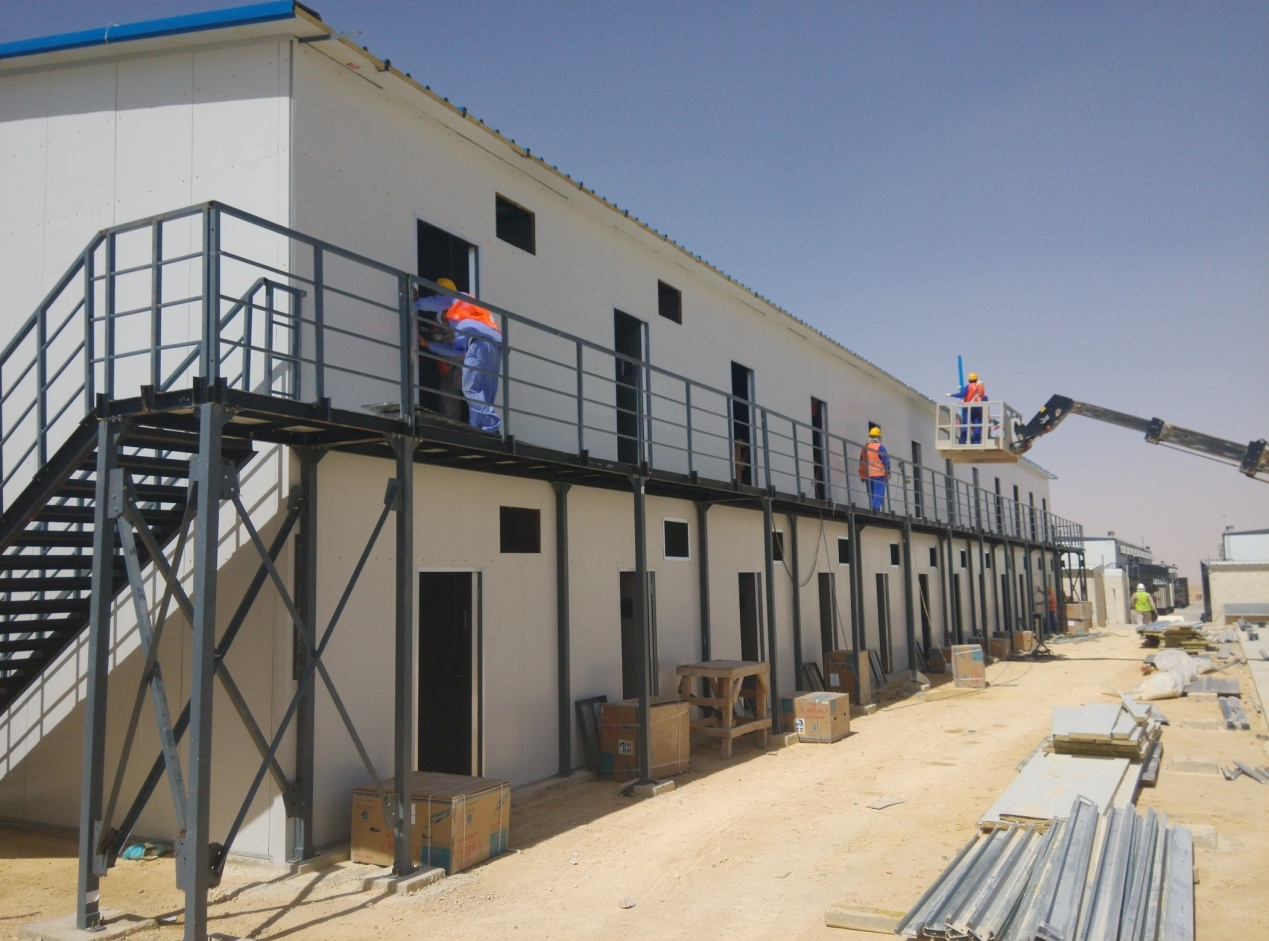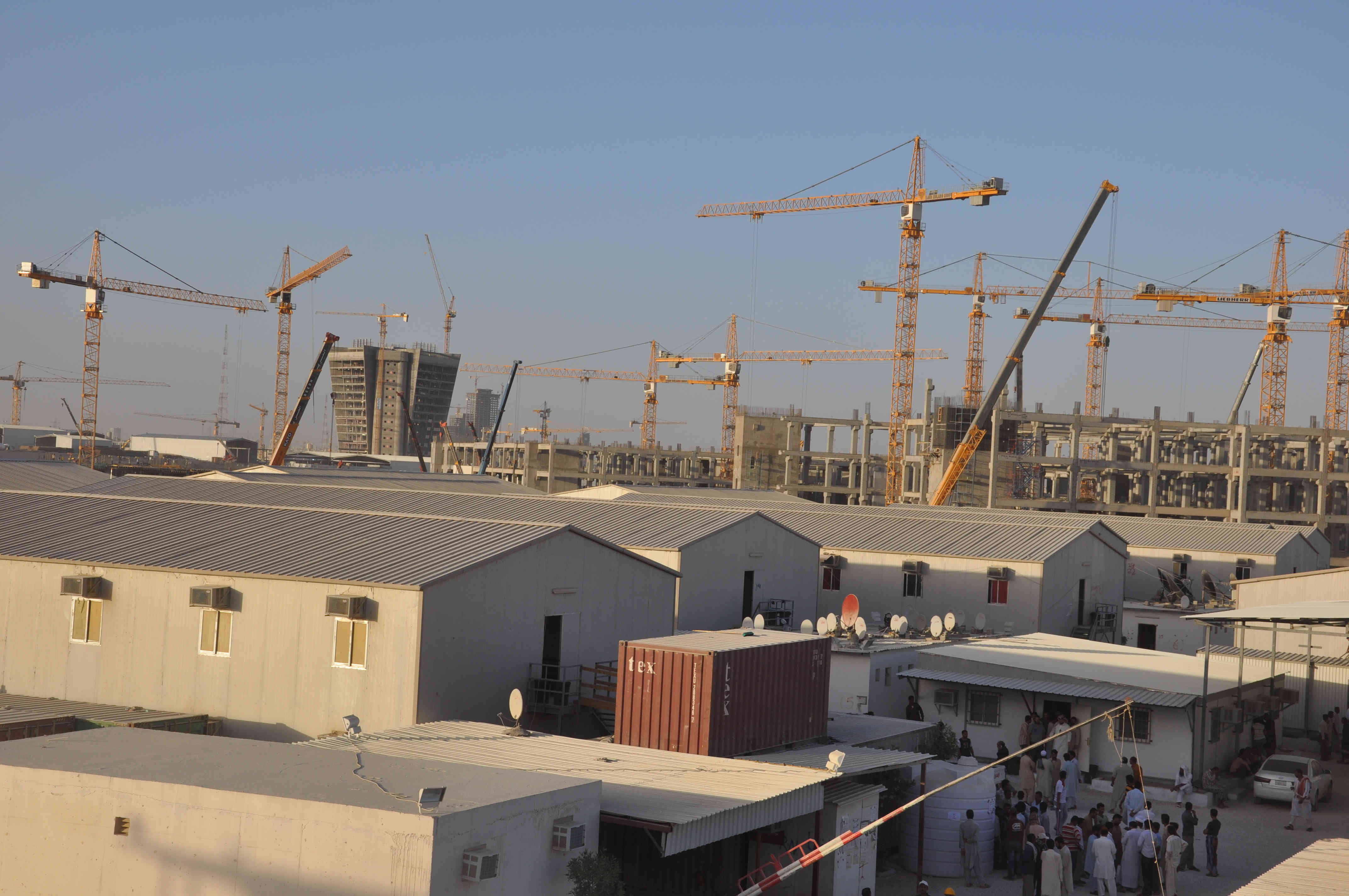Tel: 0086-532-88966982
0086-532-88965892
Website: www.lidajituan.com
E-mail: sales@lidajituan.com
Head office: 5th Floor, Building A, Darron Center, 180 Haier Road, Qingdao, 266000, China
Prefab House Innovation 2025: Lida Group Leads China's Charge in Modular Solutions for Oil & Gas
Classification:Company News
Release time:2025-07-09 09:00
Prefab House Innovation 2025: Lida Group Leads China's Charge in Modular Solutions for Oil & Gas
The global oil & gas industry stands at an inflection point. As projects push into deeper waters, harsher climates, and more complex regulatory environments in 2025, traditional approaches to offshore and onshore infrastructure face obsolescence. While many China suppliers offer commoditized prefab house products, Lida Group is spearheading a technological revolution – transforming modular house solutions from simple shelters into intelligent, resilient, and sustainable operational assets. This isn’t incremental improvement; it’s a fundamental reimagining of what offsite constructions can achieve for the energy sector.
The Innovation Imperative: Why Legacy Prefab Falls Short in 2025
Standard prefabricated house solutions developed for residential or light commercial use crumble under O&G demands:
- Static Designs: Fail to address the dynamic stresses of offshore platforms, permafrost instability, or extreme seismic zones.
- Corrosion Vulnerability: Standard coatings rapidly degrade in saline, H2S-rich, or acidic environments.
- Energy Gluttony: Poor thermal performance drives unsustainable diesel consumption in remote operations.
- Digital Blind Spots: Lack integrated smart systems for predictive maintenance, safety monitoring, or energy optimization.
- Redeployment Rigidity: Structures not engineered for multiple lifecycles across diverse project sites.
- Compliance Lag: Struggle to meet evolving 2025 standards for emissions, safety, and hazardous area classifications.
These limitations drive up operational costs, increase downtime risks, and hinder sustainability goals. Innovation is non-negotiable.
Lida Group’s Innovation Engine: Where R&D Meets Industrial Reality
Since 1993, Lida Group has cultivated an innovation culture anchored in solving real-world oil & gas challenges. Their 2025 modular solutions leverage five core innovation vectors:
1. Materials Science Revolution:
- Advanced Metallurgy:
- Graphene-Enhanced Steel Coatings: Dramatically increasing corrosion resistance in splash zones, outperforming traditional galvanization by 300% in salt fog tests (ASTM B117).
- Lightweight Titanium Alloys: Selectively deployed for high-stress connections in offshore modular house units, reducing weight while enhancing fatigue resistance.
- Self-Healing Polymers: Micro-encapsulated agents within sealants and coatings automatically repair minor abrasions or cracks exposed to corrosive elements.
- Thermal & Insulation Breakthroughs:
- Vacuum Insulated Panels (VIPs): Ultra-thin profiles achieving thermal conductivities near 0.007 W/mK, slashing thermal bridging and enabling compact designs for weight-sensitive offshore topsides.
- Phase Change Materials (PCMs): Integrated into walls/ceilings to absorb excess heat during the day and release it at night, stabilizing temperatures passively in desert operations.
- Composite Dominance: Carbon fiber-reinforced polymer (CFRP) structural elements for ultra-high strength-to-weight ratios in corrosive environments where steel longevity is compromised.
2. Structural Intelligence & Adaptability:
- Digital Twin-Driven Design: Using real-time sensor data from operational modules to iteratively refine finite element models (FEM), optimizing structures for specific wave loads, wind patterns, or seismic forces encountered at 2025 project sites.
- Adaptive Foundation Systems: Incorporating hydraulic leveling jacks or screw piles with IoT sensors for automatic adjustment on unstable ground (permafrost, sand), maintaining structural integrity over decades.
- Modular Scalability 2.0: Beyond stacking boxes. Lida’s system allows dynamic reconfiguration – converting accommodation modules into labs or control rooms mid-project without structural modifications via patented interlocking systems.
3. Integrated Smart Ecosystems (The Cognitive Camp):
- Embedded IoT Nervous System: Sensors monitoring structural health (strain, corrosion), environmental conditions (gas detection, air quality), energy consumption, and equipment status are factory-installed within prefab building components.
- AI-Powered Predictive Maintenance: Machine learning algorithms analyze sensor data to forecast HVAC failures, insulation degradation, or corrosion hotspots before they cause downtime. Maintenance shifts from reactive to proactive.
- Autonomous Energy Management: Systems dynamically balance loads between solar arrays, battery banks, and backup generators, minimizing diesel use in remote locations. Offshore modules prioritize ventilation based on hazardous gas detection.
- Digital Twin Operations Platform: Provides operators a real-time 3D dashboard visualizing camp performance, optimizing logistics, and simulating emergency responses.
4. Sustainability by Design:
- Hydrogen-Ready Infrastructure: Lida Group’s 2025 designs incorporate reinforced ventilation, leak detection, and specialized electrical systems for the safe integration of hydrogen fuel cells – a critical oil & gas decarbonization pathway.
- Net-Zero Operational Pathway: Integrating building-integrated photovoltaics (BIPV) directly into prefab home roofs/walls, paired with advanced battery storage and ultra-efficient envelopes (U-values <0.15 W/m²K).
- Circular Economy Blueprint: Employing material passports (digital IDs for every significant component), Design for Disassembly (DfD) principles, and partnerships with material recovery specialists to achieve >85% end-of-life material reuse/recycling.
- Water Autonomy: Smart rainwater harvesting, advanced greywater recycling, and zero-liquid discharge systems integrated into module designs.
5. Advanced Manufacturing & Logistics:
- Robotic Agile Fabrication: Increased deployment of collaborative robots (cobots) for precision welding, panel assembly, and repetitive tasks, enhancing quality and scalability.
- Additive Manufacturing Integration: 3D printing specialized fixtures, ductwork, and complex non-load-bearing components on-demand within factories, reducing waste and lead times.
- Blockchain-Secured Logistics: Real-time tracking of modules using tamper-proof blockchain ledgers, ensuring component provenance, shipment conditions, and arrival integrity – critical for remote oil & gas sites and regulatory compliance.
- Drone-Assisted Site Survey & Assembly: Utilizing drones for rapid site topology scanning (optimizing foundation design) and assisting crane operators during complex offshore lifts via real-time positioning data.

Lida in Action: 2025 Innovation Showcase
Project: Deepwater LNG Platform Accommodation Module, Gulf of Mexico
Lida Innovations Deployed:
- Titanium-Reinforced Frame: For critical support junctions exposed to high cyclic loads and salt spray.
- VIP Insulated Composite Walls: Minimizing weight (critical for platform stability) while achieving unmatched thermal performance in humid, subtropical heat.
- Embedded H2 Sensors & Smart Ventilation: Real-time monitoring and automatic purge systems for future hydrogen backup power integration.
- Platform Motion-Adaptive Foundations: Sensors adjusting hydraulic jacks to compensate for wave-induced platform movement, preventing structural fatigue.
- Digital Twin: Used during FAT and now for offshore predictive maintenance planning.
Result: World’s first DNV-certified hydrogen-ready offshore accommodation module delivered 30% lighter than conventional steel design, cutting installation time and platform ballast requirements.
Beyond Product: Lida’s Innovation Ecosystem
Lida’s leadership stems from a systemic approach:
- Strategic R&D Partnerships: Collaborating with universities (Tsinghua Materials Lab), global engineering firms (Arup, Wood), and tech giants (Siemens, Honeywell) on next-gen materials and systems.
- Living Lab Facilities: Dedicated test sites simulating Artic cold, desert heat, and offshore salt spray to accelerate prototyping and failure analysis.
- Client Co-Creation: Engaging oil & gas operators early in the design process to tackle specific project challenges – moving beyond vendor-client relationships to innovation partnerships.
- IP Portfolio Focus: Aggressively protecting core innovations via patents globally (300+ active patents as of 2025).
Why "China Supplier" is an Outdated Lens
Labeling Lida Group merely a China supplier ignores its global innovation footprint:
- Global Standards Setting: Actively participating in ISO committees defining next-generation modular construction standards for harsh environments.
- Technology Export Hub: Exporting engineered solutions from China, challenging traditional Western engineering dominance in oil & gas infrastructure.
- Multinational Talent: Recruiting leading engineers, materials scientists, and data analysts globally to fuel its R&D engine.
- Offshore Engineering Centers: Establishing specialized design hubs in Norway and Houston focused solely on oil & gas innovations.

2025 & The Horizon: What’s Next?
Lida isn’t resting:
- AI-Driven Generative Design: Using algorithms to create optimized structural forms impossible for human engineers to conceptualize – achieving unprecedented strength/weight ratios.
- Bio-Inspired Materials: Mimicking natural structures (nacre, spider silk) for impact resistance and self-repair.
- Fully Autonomous Construction: Integrated robotics assembling modules on-site with minimal human intervention.
- Carbon Negative Composites: Developing building materials that actively sequester CO2 during their lifecycle.
- Resilience-as-a-Service: Offering clients guaranteed uptime SLAs for critical prefab house infrastructure, backed by Lida’s predictive systems and rapid response teams.
Conclusion: Building the Future of Oil & Gas Infrastructure
The 2025 energy landscape demands smarter, tougher, and more sustainable infrastructure. Generic prefab homes lack the sophistication. Traditional construction is too slow and inflexible. Lida Group stands apart, leading China’s ascent as a powerhouse of modular house innovation specifically engineered for the formidable challenges of oil & gas.
Through relentless investment in materials science, structural intelligence, integrated digital ecosystems, sustainable engineering, and advanced manufacturing, Lida transforms modular units from basic shelters into high-performance, resilient, and adaptive operational assets. They deliver not just prefabricated buildings, but operational certainty, reduced risk, and a demonstrable path to net-zero.
For global operators navigating the complexities of oil & gas in 2025, partnering with Lida Group isn't just choosing a China supplier – it’s embracing a strategic innovation engine engineered to build the future of energy infrastructure, module by revolutionary module. When the status quo is insufficient, innovation is the only viable foundation. Lida Group is building that foundation today.
prefabricated building,modular house,oil & gas,prefab homes
Contact Us
Head Office: 5th Floor,Building A,Darron Center,No.180,Haier Road,Qingdao, 266000,China
Tel: 0086-532-88966982 88965892 Fax:0086-532-88965571
WhatsApp:+86 13793209022
Mobile/Wechat:+86-15166671720
Email: sales@lidajituan.com Website: www.lidajituan.com
Alternate Website: www.lidamodularhouse.com
Head Office: 5th Floor,Building A,Darron Center,No.180,Haier
Road,Qingdao, 266000,China
Tel: 0086-532-88966982 88965892
Fax:0086-532-88965571
Email: sales@lidajituan.com
Website: www.lidajituan.com
Alternate Websit: www.prefabhousecn.com
Wechat/WhatsApp:+86-13793209022
Copyright(c)2023 All Rights Reserved SEO Business license

